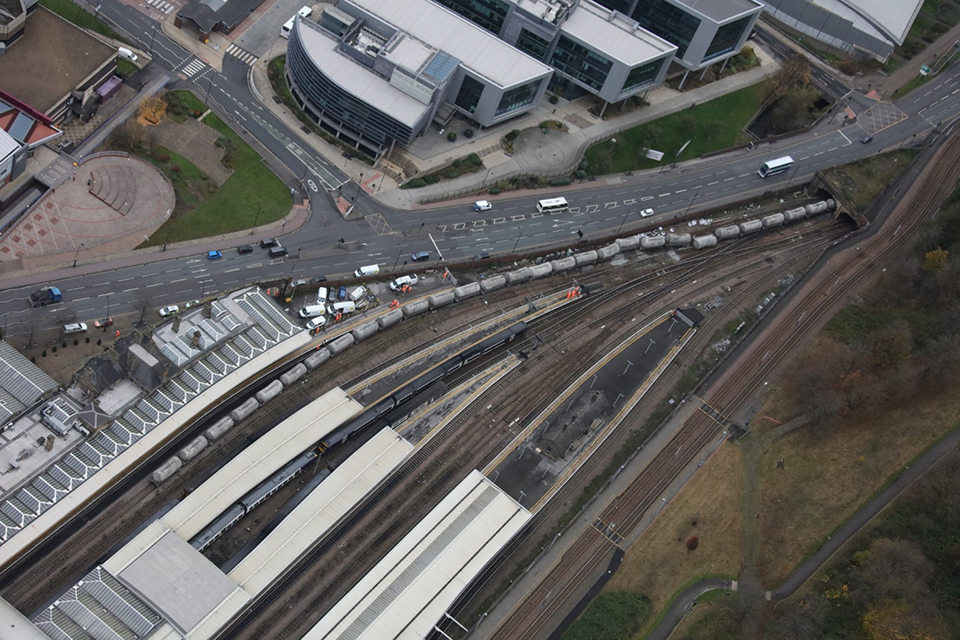
Report 07/2021: Freight train derailment at Sheffield station
Published By GOV.UK [English], Tue, Oct 5, 2021 3:00 AM
R072021_211005_Sheffield
PDF, 13.3MB, 50 pages
This file may not be suitable for users of assistive technology.
Request an accessible format.
If you use assistive technology (such as a screen reader) and need a
version of this document in a more accessible format, please email enquiries@raib.gov.uk.
Please tell us what format you need. It will help us if you say what assistive technology you use.
Summary
At 02:44 hrs on Wednesday 11 November 2020, 16 wagons of a freight train that was conveying cement powder from Hope, Derbyshire, to Dewsbury, West Yorkshire, derailed at the north end of Sheffield station. A number of wagons were damaged and there was significant damage to the track, resulting in a partial closure of the station. No one was injured.
The train was coasting through the station at a constant speed of around 12 mph (19 km/h) when the leading right-hand wheel of the twelfth wagon dropped into the space between the two running rails, because the rails were too far apart: a problem known as gauge widening. The train stopped when the signaller observed a number of signalling equipment failures indicated on a display screen, and alerted the driver to a problem.
The track gauge had widened because a number of track screws, that secured the rails and baseplates to the wooden bearers, had broken, allowing the rails to spread apart under the loads from passing trains. The track screws had failed several weeks, or perhaps months, before the derailment, but the failures had not been identified by Network Rail’s maintenance inspection activities.
Although this was a location with a potentially high risk of derailment, it had not been recognised as such because Network Rail’s guidance for identifying such risk had not been applied. Additional mitigation had therefore not been has made four recommendations to Network Rail concerning the implementation of processes for identifying high derailment risk locations, the implementation of safety-critical changes to its processes, standards governing fitment of check rails, and track geometry data formats.
RAIB has also identified three learning points for track maintenance staff alerting them to the need for effective management of track gauge in tightly curved track, the limitations of geometry alerts provided by static measuring equipment, and the importance of monitoring track geometry trends for the identification of track deterioration.
Notes to editors
The sole purpose of RAIB investigations is to prevent future accidents and incidents and improve railway safety. RAIB does not establish blame, liability or carry out prosecutions.
RAIB operates, as far as possible, in an open and transparent manner. While our investigations are completely independent of the railway industry, we do maintain close liaison with railway companies and if we discover matters that may affect the safety of the railway, we make sure that information about them is circulated to the right people as soon as possible, and certainly long before publication of our final report.
For media enquiries, please call 01932 440015.
Newsdate: 5 October 2021
Press release distributed by Media Pigeon on behalf of GOV.UK, on Oct 5, 2021. For more information subscribe and follow